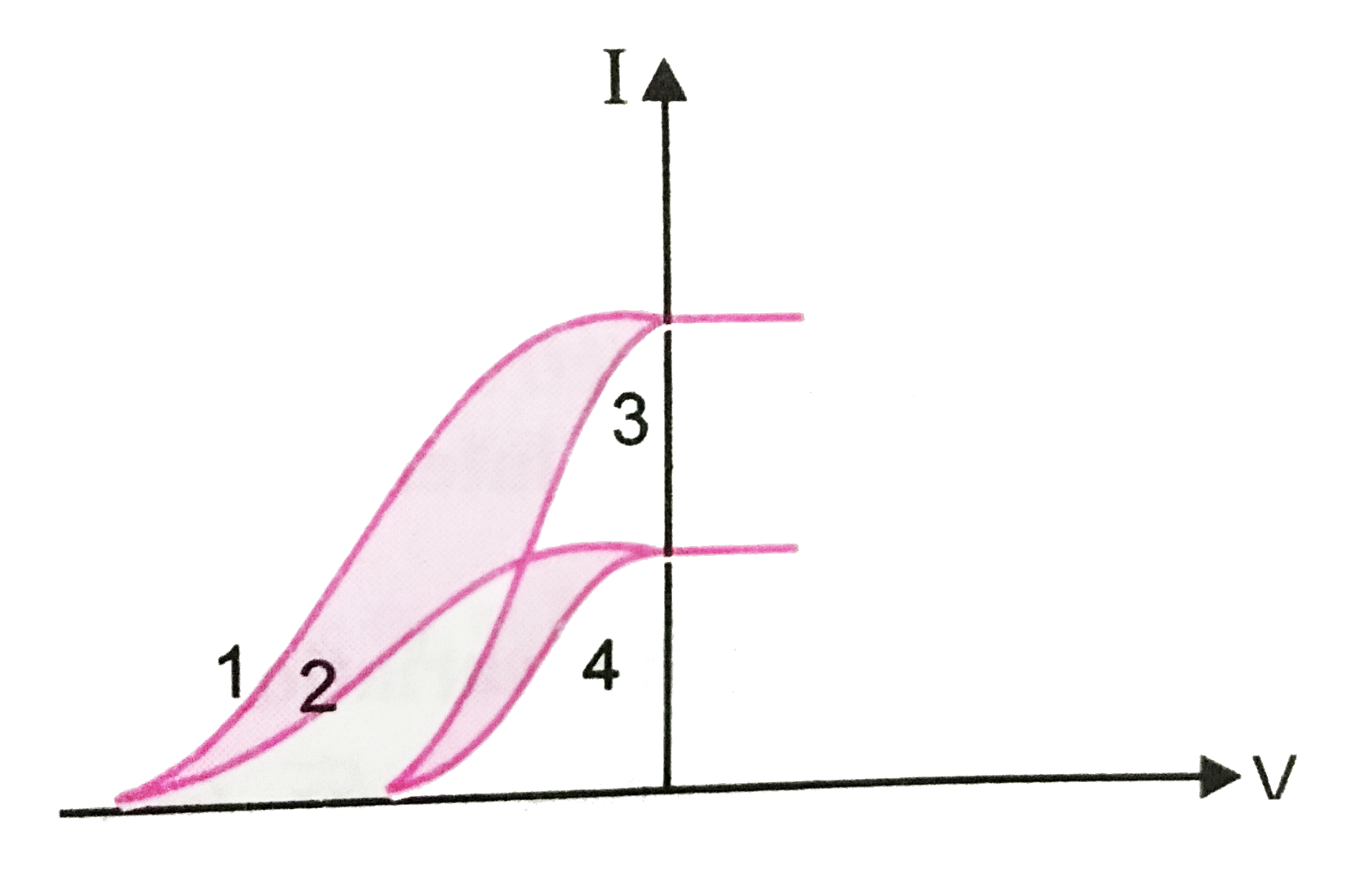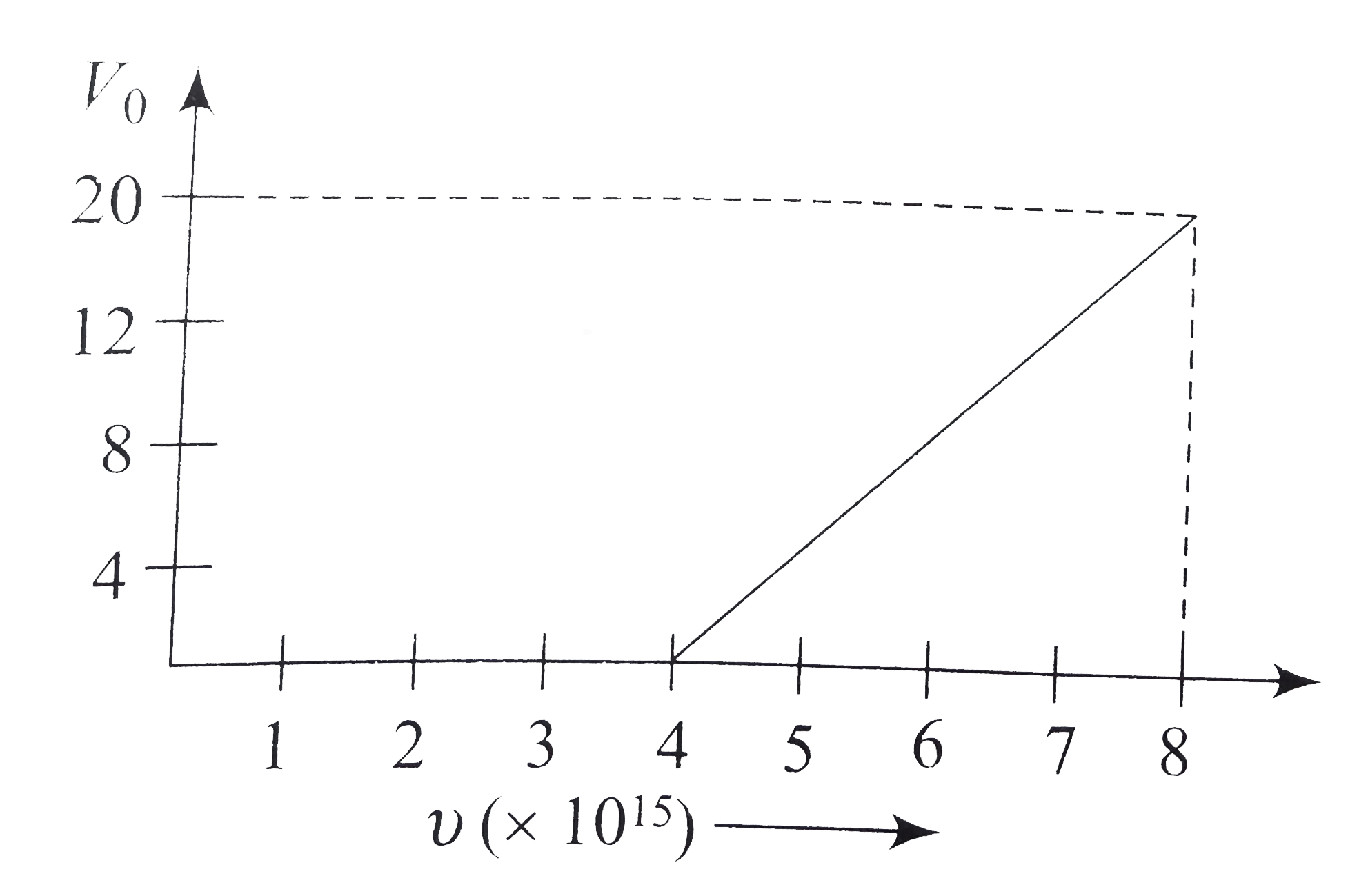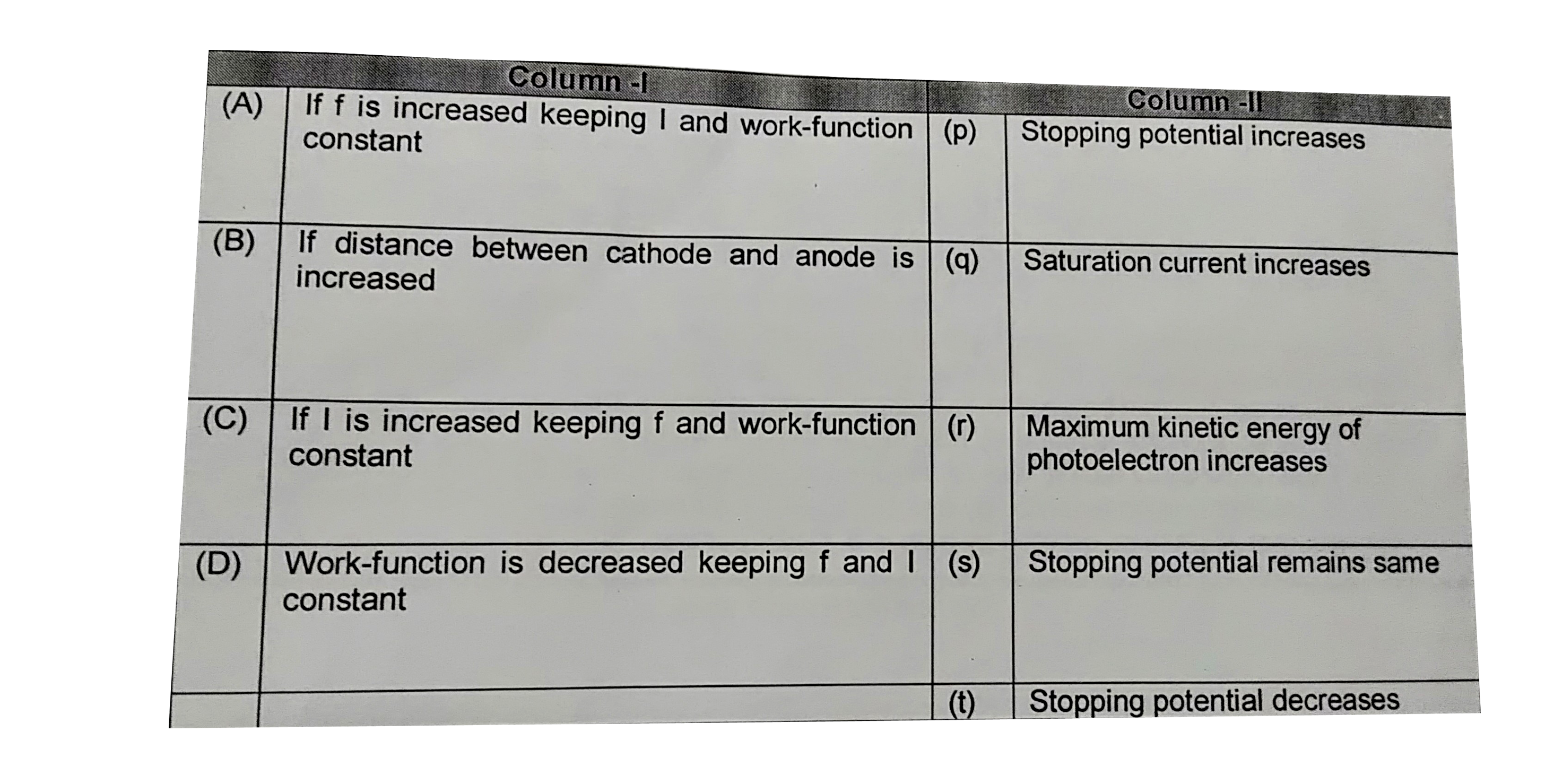The act of photoelectric effect taking place with a certain photosensitive metal depends upon
(i) frequency annd
(ii) intensity of the incident radiation.
both (i) and (ii) are correct
only (i) is correct
only (ii) is correct
neigher (i) nor (ii) is correct.
The correct Answer is:B
Photoelission is possible only with frequency greater than threshold frequency. It will not depend on the intensity of light.
Topper's Solved these Questions
- ELECTRONS AND PROTONSBOOK - MHTCET PREVIOUS YEAR PAPERS AND PRACTICE PAPERSCHAPTER - ELECTRONS AND PROTONSEXERCISE - MHT CET CORNER
19 Videos
- ELECTRONS AND PROTONSBOOK - MHTCET PREVIOUS YEAR PAPERS AND PRACTICE PAPERSCHAPTER - ELECTRONS AND PROTONSEXERCISE - Exercise 1
50 Videos
- ELECTROMAGNETIC INDUCTIONBOOK - MHTCET PREVIOUS YEAR PAPERS AND PRACTICE PAPERSCHAPTER - ELECTROMAGNETIC INDUCTIONEXERCISE - MHT CET CONER
34 Videos
- ELECTROSTATICSBOOK - MHTCET PREVIOUS YEAR PAPERS AND PRACTICE PAPERSCHAPTER - ELECTROSTATICSEXERCISE - MHT CET Corner
29 Videos
Similar Questions
The stopping potential for acertain photosensitive metal is Vq when the frequency of incident radiation is V0 When the frequency of the incident radiations is doubled, what will be the stopping potential ?
View SolutionThe graph of Fig. shows the variation of photoelectric current (I) versus applied voltage (V) for the two different photosensitive materials for two different intensities of the incident radiation. Identify the pairs of curves that correspond to different materials but same intensity of incident radiation.

View Solution
Knowledge Check

When a high frequency electromagnetic radiation is incident on a metallic surface, electrons are emitted from the surface. Energy of emitted photoelectrons depends only on the frequency of incident electromagnetic radiation and the number of emitted electrons depends only on the intensity of incident light.
Einstein's protoelectron equation [Kmax=hv−ϕ] correctly ecplains the PE, where υ= frequency of incident light and ϕ= work function.
Q. For photoelectric effect in a metal, the graph of the stopping potential V0 (in volt) versus frequency υ (in hertz) of the incident radiation is shown in Fig. The work function of the metal (in eV) is.A12.5B14.5C16.5D18.5In a photoelectric effect , the K.E. of electrons emitted from the metal surface depends upon
AIntensity of lightBFrequency of the incident lightCVelocity of incident lightDBoth intensity and velocity of light
In the photoelectric effect experiment, if f is the frequency of radiation incident on the metal surface and I is the intensity of the intensity radiations, then match the following columns:

View SolutionIn photoelectric effect stopping potential is the measured of the ____of the photoelectrons and it does not depends upon the _____ of incident radiation.
View SolutionIn photoelectric effect experiment, the number of photoelectrons emitted by a photosensitive material is proportional to the ____ of incident radiation.
View SolutionWhat is photoelectric effect? Explain experimentally the variation of photoelectric current with (i) the intensity of the incident light (ii) the potential difference between the plates and (iii) the frequency of the incident light and hence state the laws of photoelectric emission.
View SolutionDoes the stopping potential in photoelectric emission depend upon the intensity of the incident radiation in a photo cell? Comment on it.
View SolutionHow does kinetic energy of ejected photoelectrons depend upon the frequency of incident radiation?
View Solution
